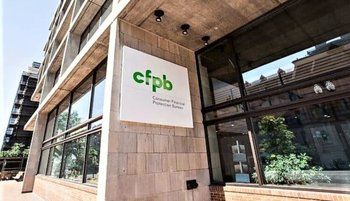According to a recent survey by Fannie Mae, only 17% of potential homebuyers indicated that it’s a good time to buy a home.
At a time when even fair income growth has been far outstripped by fast-rising home prices, the role of low mortgage rates in the homebuying equation is magnified. Why? Low rates increase the ability of a given income to afford a higher-priced home.
It's not clear yet where mortgage rates will eventually land once the Fed does finally return short-term rates back to "normal", but until then, still-high mortgage rates will crimp purchasing power to varying degrees, at least compared to where it once had been.
While not the only factor in creating and enhancing home buying affordability, mortgage rates do matter the most. A lower interest rate can allow a given income to carry a higher principal and interest payment, and thus a larger loan amount. This increases home affordability, and can offset (or overcome) even significant increases in home prices.
Low rates: Enhancing affordability
For context, let's look at some recent history.
During the last 10 years, conforming 30-year fixed mortgage rates have been as high as 7.79 percent and as low as 2.65 percent. This decline to rock-bottom levels meant that on a peak-to-trough basis, buying power improved considerably, although the actual trend for rates over this time period has been "fairly low, extraordinarily low, extraordinarily high, now less so" over the last 10 years.
In order to demonstrate how lower interest rates improve buying power, we calculated the monthly payment needed to cover a $100,000 loan in 2023 when the conforming 30-year fixed peaked at 7.79 percent. Using this monthly payment as a constant, we calculated the loan amount this P&I payment would had carried at different interest rates over time.
In the graph below, you'll see that when mortgage rates peaked in 2023 at 7.79%, a monthly principal and interest payment of $719.18 was enough to cover only a $100,000 mortgage. However, when mortgage rates were at their lowest point in 2021 (2.65%), that same $719.18 would have been sufficient to borrow $178,473 -- a 78 percent improvement ($78,473) in the amount of mortgage debt that this particular P&I payment could carry.

Low interest rates boost your buying power
As the Fed looks to return interest rates to "normal" over time, it bears noting that the interest rate associated with "normal" continues to shrink. Over the last 10 years, a reasonable time frame, conforming 30-year fixed-rate mortgages have held an average of just 4.42 percent; over the last five years, conforming 30-year fixed-rate mortgages have averaged 4.84 percent. By way of reference, the previous 10-year period (2005-2014) saw the 10-year average rate at 5.06%, which also included a period where mortgage rates reached then-record lows from a combination of poor economic conditions and housing- and mortgage-market support programs.
Record low mortgage rates a few years ago were also the result of extraordinary times, as the pandemic shut down economies across the globe, prompting the Fed and other central banks to undertake new extraordinary and novel programs to revive growth. A resumption of growth and a spate of the worst inflation in many decades saw these programs come to an end and a period of fairly high rates take their place.
With this as a backdrop, and with mortgage rates lower in the early stages of a new cycle for monetary policy, it seems very likely that the worst of the home affordability conditions are starting to fade.
|
Time Period |
Mortgage Rate |
Monthly P&I Payment |
Loan Amount This Will Carry |
|
10-year avg. |
4.41 |
$719.18 |
$143,449 |
|
5-year avg. |
4.84 percent |
$719.18 |
$136,445 |
|
2021 (trough) |
2.65 percent |
$719.18 |
$178,473 |
|
2023 |
7.79 percent |
$719.18 |
$100,000 |
Present |
6.08 percent |
$719.18 |
$118,931 |
See and shop today's mortgage rates
Mortgage rates have since come down from 2023's multi-decade highs, but even so, still remain at multi-year highs. When they eventually get there, "normal" for mortgage rates will likely be rather well above the record lows seen in recent years.
Income growth helps close the gap, too
In the examples above, we used the monthly principal and interest payment as a "constant" to show how the mortgage rate affects how much you can borrow. This also means that the borrower's income was a constant, too, and in this case, the $719.18 being used for the loan's principal and interest payment -- calculated using a standard 28% qualifying ratio -- translates to about a $30,822 annual income. Of course, that's a very low income figure, and there are unlikely to be many homes available anywhere that can be purchased with a mortgage amount of just $100,000.
Fortunately, the income reality is a little different. According to the Census Bureau American Community Survey, the typical family income in 2022 was $92,646, and reckoning wage increases of 4% in each year since then creates a working figure of $99,628 as a median family income in 2024.
Working backwards from 2022 incomes, a median family income in 2021 when interest rates were at their lowest was likely $88,940 (2022's figure less 4%). With a rock-bottom mortgage rate of 2.65% in 2021, this income would have qualified the borrower for a principal and interest payment of about $2,075.27, allowing it to carry a mortgage amount of up to perhaps $515,001 -- so affordability was extraordinarily strong.
Then, moving forward from a 2022 income of $92,646, even with an upward adjustment for 2023 to $96,352 (2022's income figure plus 4%), the peak mortgage rate of 7.79% in 2023 more than overwhelms the bump in salary. The higher income allows a principal and interest payment of $2,248.21 -- nearly $173 more per month than in 2021-- but the loan amount that this P&I payment will support is only $255,064.
It's little wonder, then why home sales faltered. With median existing home prices hitting record highs in June 2024 ($426,900) even a borrower making a 20% down payment of $85,320 is still faced with a loan amount of $341,280 -- and so cannot qualify to buy a median-priced home -- unless incomes rise and mortgage rates fall (or home prices broadly retreat, something that is both unlikely and that would only occur if the economy turned south).
As noted above, we reckon that incomes rose by about 4% in 2024. If mortgage rates hadn't declined, this would have improved purchasing power a little bit -- the $99,628 income we reference above, at a peak 7.79% interest rate would have allowed a potential borrower $2,324.68 to cover principal and interest payments, enough to manage a mortgage of about $265.686 -- or about $10,622 more due solely to the income rise from 2023. Every little bit may help, but in this case, not so much. The good news is that mortgage rates are no longer at peak levels, and have declined appreciably in 2024.
P&I payments and qualifying
In the examples above, we only consider the Principal and Interest (P&I) portion of a mortgage payment. While this figure will determine the maximum mortgage amount your income will be allowed to carry, P&I is just a portion of any mortgage payment. Taxes, Insurance costs (and HOA fees) will reduce the amount of income available to cover P&I costs, as can other consumer debts. Any reduction in what can be spent on P&I means a smaller mortgage amount can be carried.
Here are incomes, home purchase prices and loan amounts that account for typical tax and insurance payments.
• In 2021, when rates were 2.65%, an $88,940 income would have allowed the borrower to purchase up to a $515,373 home, carrying a mortgage amount of $412,298 with a PITI payment of $2,075.27 after a 20% down payment ($103,074)
• In 2023, when rates were 7.79%, an $96,352 income would have allowed the borrower to purchase up to a $318,830 home, carrying a mortgage amount of $255,064 with a PITI payment of $2,248.22 after a 20% down payment ($63,766)
• In 2024, when rates were 6.08%, an $99,628 income would have allowed the borrower to purchase up to a $394,991 home, carrying a mortgage amount of $315,993 with a PITI payment of $2,324.68 after a 20% down payment ($78,998)
The decline in rates in 2024 and the rise in incomes are starting to allow more potential homebuyers a chance to access the housing market.
We update these home affordability calculations in our quarterly
"Income you need to purchase a home in the top 50 metropolitan areas",
or you can run your own affordability calculations.
But lower mortgage rates will do more
The good news is that the economy's still okay, and that mortgage rates have retreated from 2023's highs and incomes are still rising. The two help close the gap, but where income growth is typically a slow process and more likely to rise on an annual basis, significantly lower interest rates and their multiplying effect on affordability can appear very rapidly.
Should rates decline to around 5.5% next year -- a figure in at least some early forecasts -- and considering even a smaller 3% increase in 2025 median family incomes to $102,617 -- the combination of the two should improve affordability a considerable bit more, as the 2025 income would support a $2,394.40 principal and interest payment. At a 5.5% rate, that amount could carry a mortgage amount of as much as $348,816 -- and adding a 20% down payment ($102,617) to this would make buying even a 2024 record-high median-priced home a possibility.
Outside of a considerable decline in home values -- a happenstance with both causes and effects that no one should actively hope for -- the only way to offset today's higher-than-normal interest rates is stronger income growth. Stronger income growth helps offset firmer rates and/or rising home prices, and the enhanced purchasing power of higher incomes would strengthen the housing market.
After a fairly strong period of years, income growth will probably slow as we move deeper into the post-pandemic expansion but will still provide at least some offset for rising home costs,. However, the return of lower -- "normal" -- mortgage rates to the market is what should re-ignite home sales. Absent some new crisis, mortgage rates aren't likely to head down to record low levels again anytime soon, and will most likely eventually settle somewhere near recent five- or even ten-year averages, if history is any guide. That said, it looks as though the worst of the home affordability crisis is starting to fall behind us.
For more about Fed actions and rate cycles, be sure to read “Federal Reserve policy and mortgage rate cycles.”



